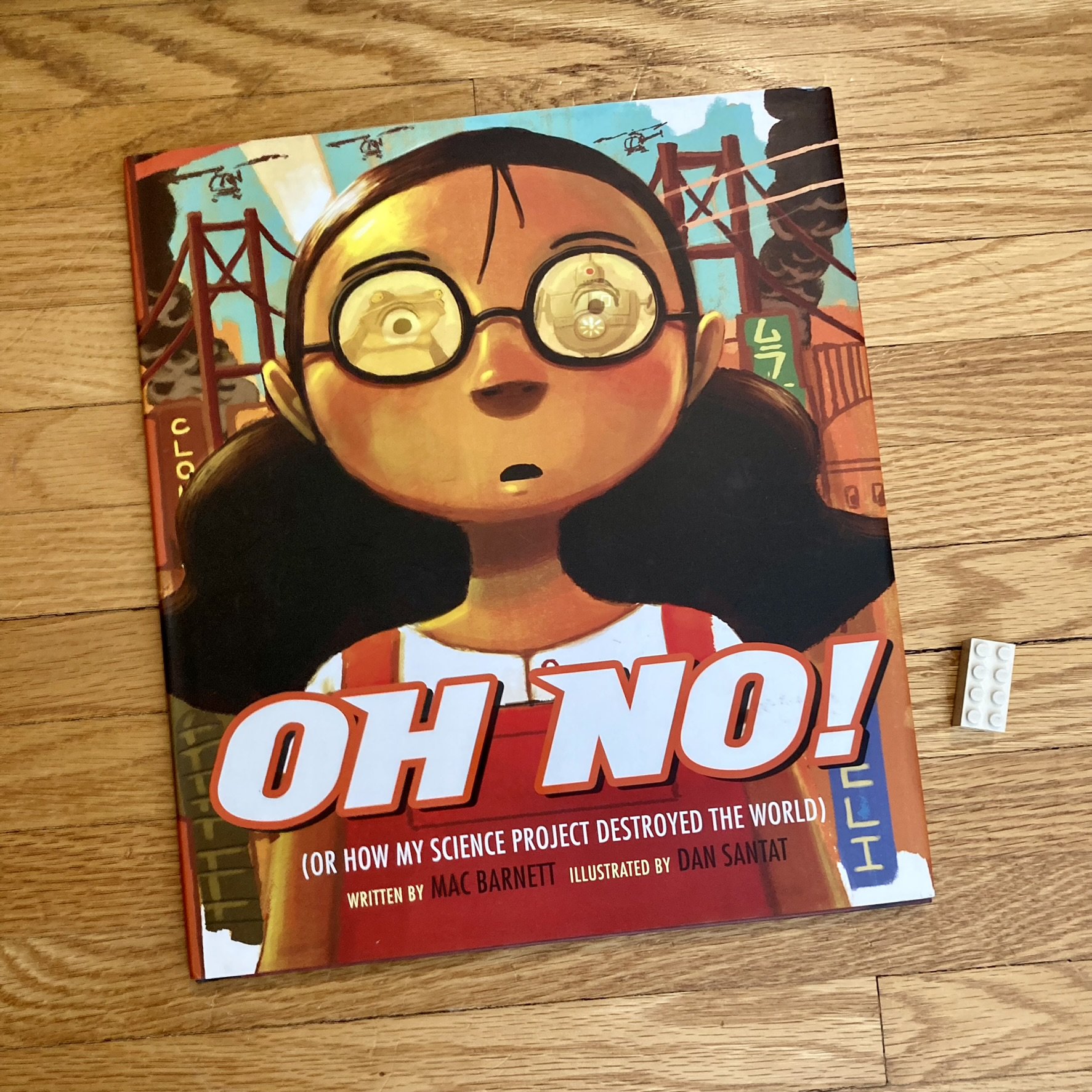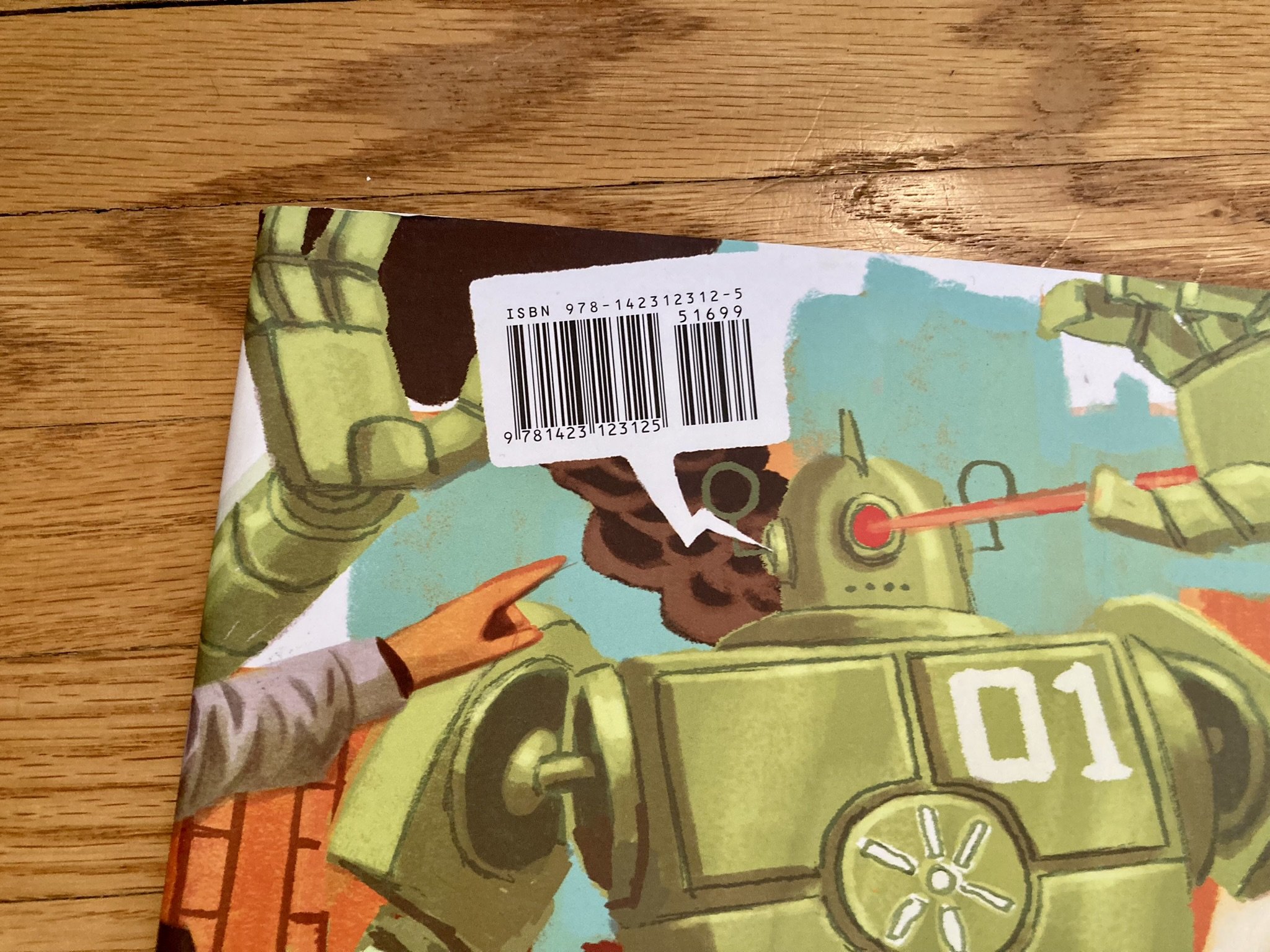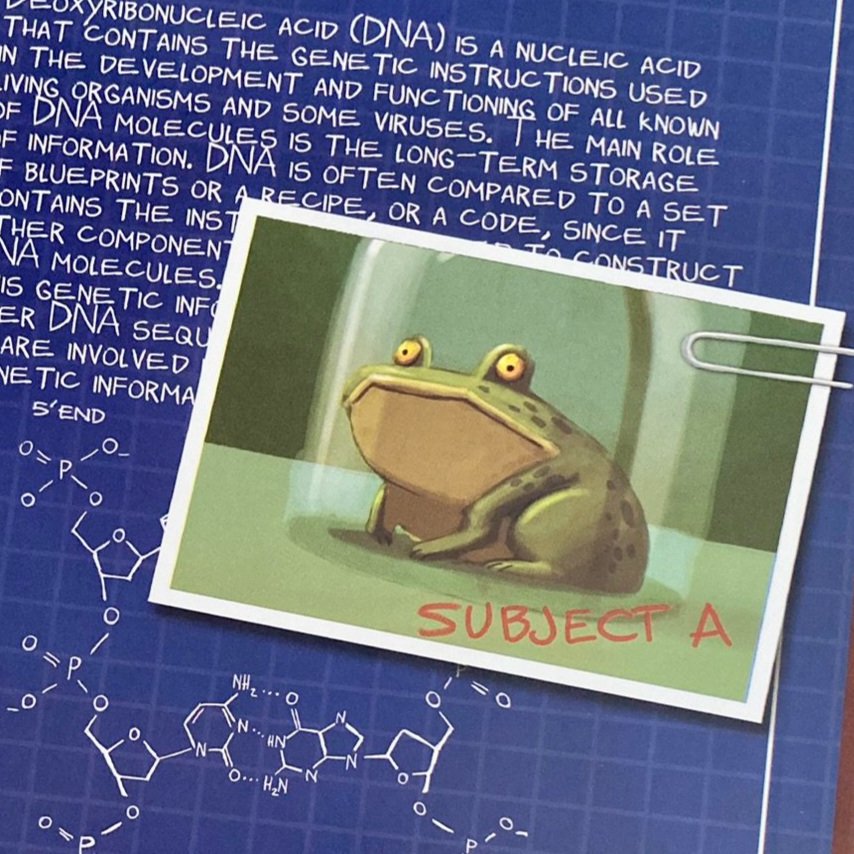Oh Yes!
Front cover of Oh No! (Or How My Science Project Destroyed the World) written by Mac Barnett and illustrated by Dan Santat.
As we continue to explore book covers as part of our Head Alien’s Book Cover Project, we wanted to pull an example from our visual storytelling collection, a.k.a. illustrated “children’s” books (although we choose not to refer to them as “children’s books” because these books really are for everyone).
And Oh No! (Or How My Science Project Destroyed the World), written by Mac Barnett and illustrated by Dan Santat, published in 2010 by Disney Hyperion Books, is a great example.
To start with, the front cover dust jacket art is spectacular: a phrase every kid has uttered, set in large letters; a subhead that draws the reader in with its disclosure of mass destruction; and a large child’s stunned face, in whose glasses are reflected, upon closer inspection, a robot and a frog, while behind her smoke and helicopters fill the sky. Displayed face out in a display or on a bookstore shelf, one would be hard-pressed not to reach for it.
But from here, Oh No! takes its dust jacket, cover boards, and end papers a step beyond. From here on out, it is no longer about attracting attention, but more about sustaining attention as the reader discovers literal layers of additional artwork.
Opening up the book reveals a piece of artwork that spreads across both sides, revealing yet more reasons for exclaiming “Oh No!”
Arguably this expanded artwork still serves that first function of attracting attention, perhaps sticking out spine-first on a shelf and glimpsed from the back, but it also only achieves its full effect after the book has been taken off the shelf.
Note also the brilliant detail of incorporating the ISBN barcode right into the artwork, as the digital computer techy speech bubble output of a giant robot shooting lasers from its eye.
And now that the book has been opened, the surprises just keep coming.
The end papers – a.k.a. the inside covers – turn out to be blueprints for a robot in the front inside cover…
…and for a growth ray device on the inside back. Also, frog foreshadowing.
And the fiction of seeing an actual photo paperclipped to the inside is a nice touch.
But then there’s still more!
First it was the inside cover, now we discover it’s also full size artwork on the inside of the dust jacket, designed as a movie poster, as well as entirely different artwork on the cover boards, turning the book into a facsimile of a scientific notebook.
In conclusion, I just want to point out the bears dressed as robots wearing tin foil hats.
Do I really want to get into the book now and see what happens? Oh yes…
Happy Reading!
– Winston










